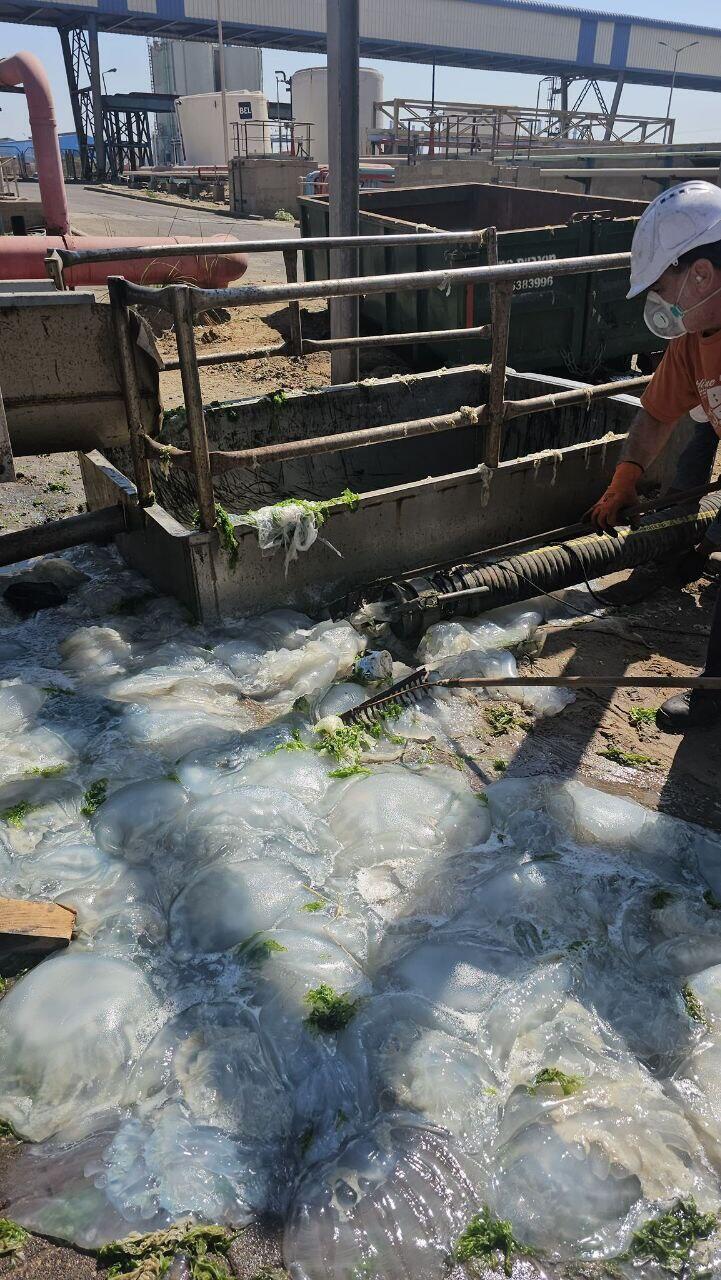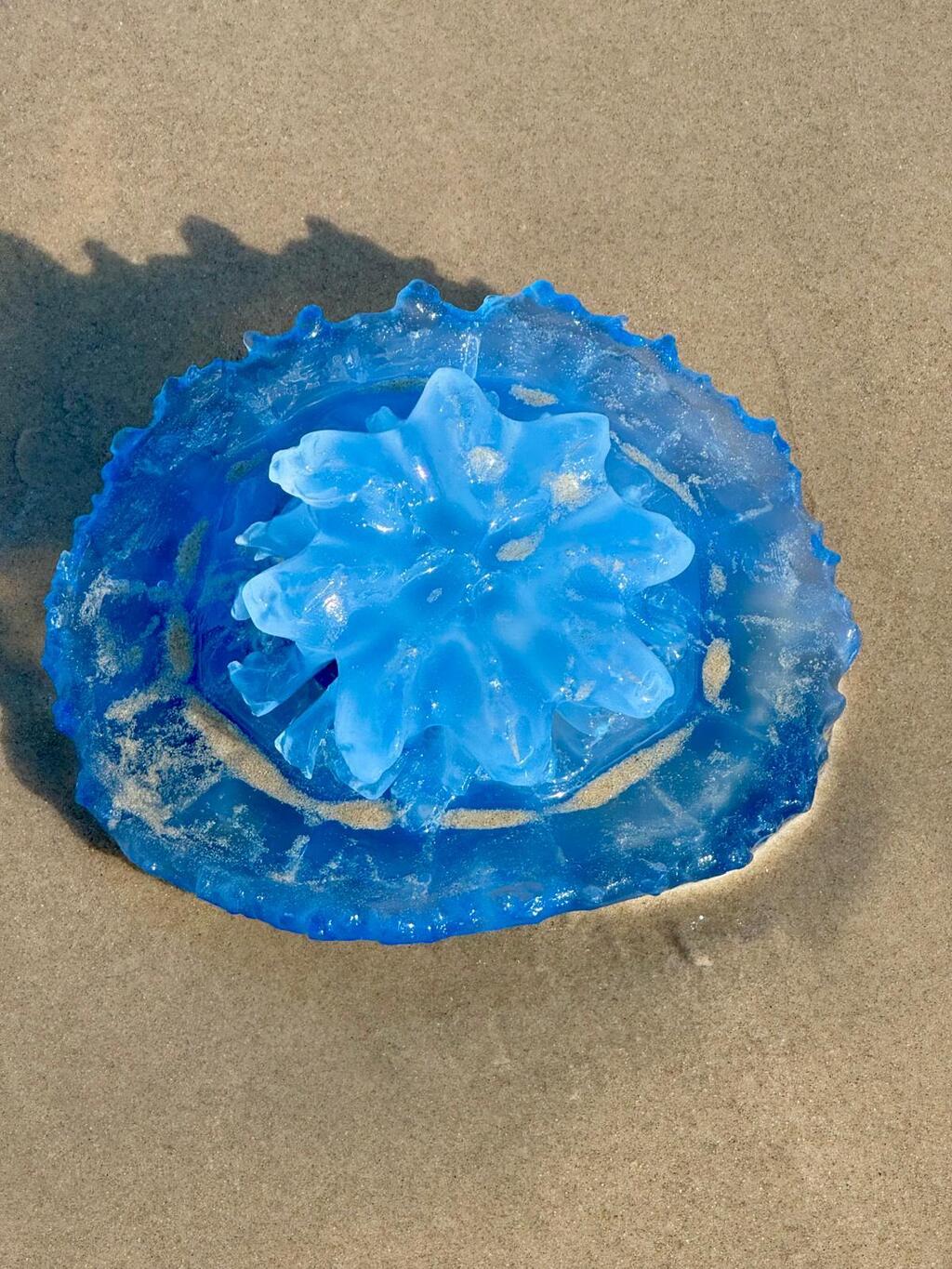Tens of thousands of jellyfish began washing into the intake screens of the Rotenberg power station in the southern city of Ashkelon early Friday morning, raising concerns about potential blockages in the plant’s vital cooling water supply, Israel Electric Corporation officials said.
Company personnel responded swiftly, regularly clearing the screens and transferring jellyfish into specialized containers. These efforts prevented any disruption to the plant’s electricity production. “Thanks to early preparation and rapid action, the station continues operating without impact, even under extreme weather, security threats or natural challenges,” the company said in a statement.
Thousands of jellyfish wash into the intake screens of the Rotenberg power station in Ashkelon
(Video: Israel Electric Corporation)
To monitor the situation, the Electric Corporation dispatches drones daily to assess jellyfish presence in the sea. “We scan our work environment — including the sea — for potential contaminants,” said Shimon Ohayon, acting manager of the Rotenberg station, in an interview with Ynet. “We expected the jellyfish to arrive at some point, but this year they came earlier and in greater numbers. The sea is critical for turbine cooling, so we prepare in advance.”
Ohayon noted the timing of the jellyfish influx came after the ceasefire with Iran, potentially sparing the plant from operating under fire. “I hope this jellyfish wave will be shorter, because it requires us to provide round-the-clock responses with increased staffing,” he added.
4 View gallery


Thousands of jellyfish wash into the intake screens of the Rotenberg power station in Ashkelon
(Photo: Israel Electric Corporation)
A www.meduzot.co.il map shows the marine creatures have appeared across nearly all Israeli beaches—from Betzet in the north to Ashkelon in the south—as bathers in Nahariya, Haifa, Hadera, Netanya, Tel Aviv, Bat Yam, Rishon LeZion and Ashdod report stings and large swarms.
Haifa University researchers earlier this week identified the species as the medium-sized Rhopilema nomadica, commonly known as nomad jellyfish.
“Summer jellyfish swarms usually appear around the time of the summer solstice, and we expect their density to increase in the coming days. It’s important to remember that swimming is only permitted in accordance with Home Front Command safety guidelines," said Dr. Dor Edelist of the Applied Marine Ecology and Biology Lab in the Department of Maritime Civilizations at the University of Haifa.
Get the Ynetnews app on your smartphone: Google Play: https://bit.ly/4eJ37pE | Apple App Store: https://bit.ly/3ZL7iNv
"We recommend beachgoers visit www.meduzot.co.il and report sightings—whether you see jellyfish or not. These reports help the public and also support the long-term research we’ve been conducting for years.”
Dr. Edelist added that in the event of a sting, the affected area should be rinsed with seawater only, and a burn-relief ointment should be applied.
Meanwhile, a local on Thursday captured footage of blue jellyfish at Poleg Beach in Netanya. These belong to the species Rhizostoma pulmo, commonly known as the barrel jellyfish, which was once referred to as the "common jellyfish" in Israel.
Over the years, however, it has been overtaken by Rhopilema nomadica, the nomad jellyfish, known for the numerous trailing tentacles that gave it its name, and for delivering the most painful sting among jellyfish species in the Mediterranean.






